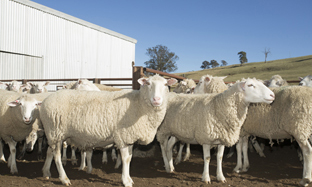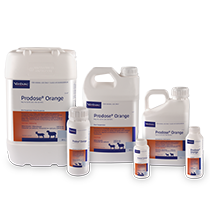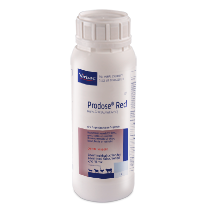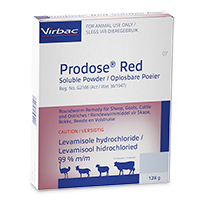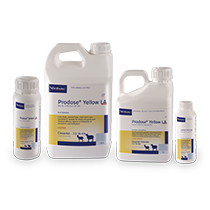
HOLISTIC INTERNAL PARASITE MANAGEMENT FOR SHEEP AND GOATS
Gareth Bath, Jan van Wyk and Faffa Malan
INTRODUCTION
Over the past ten to fifteen years there has been a radical rethink on our previous worm control strategies and assumptions due to the ever-accelerating failure of anthelmintics globally. This has caused a quiet but drastic revolution in many of the “received wisdoms” which governed advice to farmers for close to a century.
For a start, we have to abandon the underlying philosophy that internal parasites are an evil plague which should be maximally suppressed, or preferably eradicated. We have to learn to live with parasites, and prevent only the unacceptable production losses, while simultaneously breeding animals fit for the environment, rather than making the environment fit for existing animals. By regarding parasites as part of the natural order of things, we will be able to see them simply as potential problems to be managed in order to achieve optimum productivity and profitability.
Only well integrated, holistic planning has a long-term chance of success, and unless all elements of our potential armamentarium are harnessed, the results will not match the expectations. While this paper applies to helminths, and mainly nematodes, the parallels and inferences which can be made for ectoparasites, and indeed other organisms, should be obvious.
I. WORM MANAGEMENT PRINCIPLES
A. FLOCK MANAGEMENT REQUIREMENTS
Separation of Groups
Since different classes of animals vary in their susceptibility to worm infection and its effects, they should be separated into groups, which are grazed, treated and managed as distinct entities. If these distinctions are not made one may be forced to treat the flock according to the most susceptible group. The most susceptible groups can still be managed and treated more intensively in a mixed flock, but this becomes more difficult.
Identify the groups most at risk
Research has shown that the more susceptible animals are lambs/weanlings; and pregnant/lactating ewes. The former is susceptible because they cannot yet mount an effective immune response to infection, the latter are prone to infection because of a temporary suppression of immunity. (PPRR). These groups must get special attention.
Separation of pastures
Unless pastures can be divided by fencing or herding, all sheep will be exposed to a similar challenge, regardless of whether they are susceptible or resistant to infection and its effects. This will prevent any differentiation in management and treatment. Diversion of pastures is not only good for internal parasite control; it also aids pasture management. Electric fences can be used as temporary pasturage dividers. In communally farmed areas, herding or tethering can achieve the same result without fencing.
Resting of pastures
If pastures can be separated, it is then possible to rest them effectively, which has decided advantages to pasture management and improvement. If such pastures can be rested long enough, this will also have a significant effect on the survival of worm larvae and therefore the infection rate of the flock.
Although the time needed for effective resting of pastures will vary with the climate, weather and worm species, a useful rule of thumb for effective resting is at least 3 months in subtropical for temperate climates, but as little as 1 month in the tropics. The longer the rest, the better it is for worm management.
Alternation of host species
Sheep and goats share the same worm species and alternation with one another is ineffective for worm management. However, other species like cattle, horses and ostriches are generally not susceptible to the worms of sheep and goats. If they are used to graze pastures before or after sheep or goats, they act as "vacuum cleaners" on the pasture, as they ingest many larvae which cannot develop further into egg-laying adults. The other advantage is that the pasture can still be utilised in its growing season, which prevents the grass from becoming senescent, and optimises its usefulness. This aids in maintaining the profitability of the farm.
Mend water leaks
Water points (troughs, windmills) should not be allowed to leak, as this encourages the growth of grass. Since this is where sheep concentrate, the area can become lethally contaminated by larvae.
Avoid grass in pens
Where sheep or goats have to be penned for lengthy periods (usually at night, to combat theft or predation) there can be a fatal buildup of larvae on the grass growing there. Sheep become hungry overnight and will eat these morsels of food. In consequence they will ingest massive numbers of larvae. It is therefore necessary to remove all grass from such pens.
Fence off moist areas
Areas particularly prone to high moisture and therefore the survival of worm larvae, like streams and marshes, should be separated to reduce the challenge of the flock.
Strategic movement of flocks
The aim should be to create "safe" (not necessarily "worm free") pastures. By planning changes in camps or paddocks, stock will be subject to lower challenges and need less chemical treatment. Any grazing system where a significant proportion of the pasture is rested for a full growing season will be particularly effective.
Quarantine and treatment
Do not simply introduce purchased animals into the flock or herd. They must be quarantined in a worm-unfriendly pen (bare earth or concrete) and treated intensively using the best drugs and schedule. If financially feasible, do an FECRT to ensure minimum carry-over of drug-resistant parasites. Then place them on infected pasture if there is no multiple resistance.
B. GENETIC SELECTION
Selection for resistance
Resistance (the acquired or innate ability to prevent or minimise infection by parasites) is heritable and can be selected for, by measuring the faecal egg counts and using only those sheep with the lowest FEC's for breeding. For practical and economic reasons, this is usually only done for rams. Some successful breeding programs have been undertaken but they require good organisation and meticulous record keeping. Culling of bad ewes and their offspring is also practical and recommended.
Selection for resilience
Resilience (the ability to withstand the effects of infection and produce satisfactorily in spite of it) is also heritable. At present, only two proven methods, FAMACHA© and Haematocrit determination exist, although preliminary results suggest that Body Condition Scoring may also be useful.
The FAMACHA© System can be used only where wireworm is the major parasite. By treating according to clinical anaemia (an indicator of poor resilience), only those sheep unable to cope with wireworm are treated. This reduces selection pressure for anthelmintic resistance and at the same time allows the farmer to cull the non-copers, in the long term thus being able to breed an animal better adapted to the environment. It is also possible to select rams by a system of allocation of selection indexes. This is currently under investigation and will require measuring individual ram FECs and FAMACHA© scores (or haematocrits) to make the measurement more accurate.
C. MONITORING SYSTEMS
FEC
Regular (monthly or 2 - monthly) monitoring of faecal egg counts on a group or flock basis will help to indicate when dosing is really needed, and equally important, when it can be delayed or even omitted. A bulk (composite) FEC comprising a single count of faeces pooled from equal samples from 10 to 20 sheep is certainly cheaper than dosing the whole flock unnecessarily. Keep graphs or tables of changes to indicate when parasite buildup is likely.
FECRT
Every farmer should have the flock tested for drug resistance in the worm population on his farm, at regular intervals of not less than two years. Only by knowing exactly what the state of anthelmintic resistance on a farm is, can appropriate action be taken. Generalisations like "benzimidazole resistance is found on most farms" are not much use since they cannot tell us what the situation is on a particular farm.
Just as important, we must know not only that resistance is present, but also how bad it is. Can we still use the drug group at all? Separate bulk faecal samples from each drug group will reduce the cost to acceptable levels.
FAMACHA© evaluation
Apart from selection and culling, this system also allows frequent, cheap and easy monitoring of the current situation as regards worm infection, but applies only to haemonchosis.
D. OPTIMISE ANTHELMINTIC USE
Establish the important parasites species present
Unless the prevalence and importance of worm species is known, worm management becomes dangerous and unpredictable guesswork. It can also be ineffective and very costly.
Use the most suitable drug
If the parasites are ranked in order of economic importance and their susceptibility to groups of anthelmintics is known and combined with knowledge on the anthelmintic resistance situation on the farm, it is then possible to decide which drug(s) and formulations will be the most suitable in each situation. This includes their cost and a cost/benefit analysis. Neither the cheapest nor the most expensive drug is necessarily the best one to use. Beware of generic drugs sold by an unknown company.
Avoid too frequent treatment
The old approach of "dosing clean" must be completely abandoned, although not by reducing the dosage rate per animal. The aim has to be to treat only sufficient times and enough individual animals to maintain the equilibrium between parasite, host and environment (that is, worm management). Overtreatment ensures that only resistant parasites can survive. Minimal treatment programs must be the new watchword, but is must be ensured that every treatment is effective.
Treat all and stay
This is a major departure from the recommendations made for close to a century. If all sheep are to be treated, they should remain in the camp (paddock) where they were grazing before treatment. This will prevent sheep from contaminating a new pasture with only those resistant parasites which survived treatment, thus in the process unwittingly causing the selection for resistance parasites. In most cases they should remain in the paddock for at least 2-3 weeks after treatment to pick up unselected larvae for propagation of the susceptible worms in the new camp/paddock. However, should a long acting anthelmintic be used, this period will have to be longer (2 to 3 weeks after the effective residual action ends). Particularly bolus (slow release) formulations should be used with great caution.
Treat selectively
It is preferable to treat only those sheep or goats unable to cope with the current infection challenge, provided the percentage of non-copers remains below 20%. This can be done with the FAMACHA© system for haemonchosis, or possibly with Body Condition Scoring for other parasites. If clinically unaffected animals are left untreated, an immediate move to new pasture will not be detrimental. In the absence of such selective treatment, just leaving a small percentage (10-25%) of the flock intentionally untreated can be beneficial to slow AR development.
Move then treat
Another way of achieving the same result as “treat all and stay” is to move the flock to a new “safe” pasture and delay treatment for 2-3 weeks, to allow the seeding of the new pasture with unselected worms, before treating the flock.
Herbal Remedies
These are often touted as the answer to worm control. However, unless they have been properly tested and proven by an independent body, they may be useless or even harmful.
E. IMPROVED ANTHELMINTIC EFFICACY
Dose over the tongue
By placing the tip of the gun towards the back of the mouth, over the tongue, closure of the oesophageal groove does not occur and thus the full dose lands in the rumen where it is absorbed more slowly - this is particularly important for anthelmintic groups which rely on prolonged blood levels for their effect, like the benzimidazoles and macrocyclic lactones. This prolonged level of activity (a long so-called "killing zone") means that the drug against which worms have developed a moderate degree of resistance can be made more effective, although of course the resistance of the worms is not reduced, but rather partially overcome. However, dosing (drenching) over the tongue, if done carelessly, can result in two very severe consequences: the dose can land up the lungs, and cause pneumonia; the nozzle of the dosing gun can penetrate he pharynx and cause severe, fatal infection. If the sheep jumps forward, the operator must let the gun ‘ride’ with the sheep, and not oppose it, and the dose must be delivered by a measured, steady pressure rather than a single squeeze.
Reduce feed intake
It has been shown in the case of benzimidazoles and closantel that reducing feed intake (i.e. starvation) for 24 hours prior to treatment will improve the absorption of the remedy because of the lower rate of flow of ingesta. As in the previous case, this results in a more effective exposure of the parasite to the drug. In turn, this means that the drug is clinically more effective and can partially overcome drug resistance.
Repeat the dose
This only applies to benzimidazoles and macrocyclic lactones. Two doses given 12 hours apart will again increase the “killing zone” of these drugs, allowing more time for a cumulative killing effect. Thus, resistant worms can still be killed, although this is achieved at a cost since two normal doses rather than one are needed. A double dose, given at one time, will have no beneficial effect with these two groups of anthelmintics.
Increase the dose
This only applies to drugs which rely mainly on peak concentrations for their effect. In this case, a double amount of drug given at one time can overcome drug resistance in worms. This is useful for the imidazothiazoles (levamisole). There is however a relatively low safety margin, only 2x – 3x the therapeutic dose may sometimes cause problems of toxicity.
Correct dosage
It may seem too obvious, but a lot of problems are caused by not weighing sheep, not calibrating and checking the dosing gun for accuracy and repeatability, and not reconciling the amount of drug used with the number of sheep treated. Underdosing may be a factor leading to anthelmintic resistance, but it is more likely to be the cause of ineffective treatment.
Drug combinations
Combining drugs from different activity groups in one dose may temporarily improve the effective clinical action of these drugs, but only if each drug concerned is unaffected by resistance. However, many authorities believe that this will not slow the development of resistance and could even enhance it. If drugs are mixed, this can only be done if the formulation has been fully tested and carried by experts, in registered products. Home-made combinations are dangerous and illegal. Such combinations often just give temporary relief and disguise the emergence of AR until it is severe and multiple.
Sustained delivery
Medicated blocks or controlled release capsules will increase the clinical efficacy of those drugs which rely on prolonged action for their effectiveness. However, we have to bear in mind that prolonged exposure to a drug at low levels will increase selection for resistance. This approach will therefore not be permanent, and should only be used for very specific, limited purposes (e.g., weaners on green pasture) and not the entire flock in all circumstances.
Goats are different
Because of differences in the rate of metabolising drugs, goats must be treated as different to sheep. This means that goats must often be given a higher dosage rate than sheep except where there is a possibility of toxicity. Note that many anthelmintics may not be registered for use in goats, or that the recommended dose given is the same as for sheep. Unfortunately, therefore if the product is not registered for use in goats, or the dosage rate is increases, the user has no legal redress if the product is used and fails, or causes losses.
F. EFFECTIVE PLANNING
Use the expert
Knowledgeable veterinarians, who know the area, farming systems and risks can construct a simple, practical, economic and effective holistic worm management strategy. They can consult helminthologists where necessary.
Use a program
Unless a basic planned system is in place and is used, actions will inevitably be largely reactive and based on ad hoc or panic decisions. But this does not imply a rigid adherence to the basic plan.
Flexibility
The program must be flexible to allow for changes in weather, management and farming systems, drug costs or other factors.
Treatment strategy
It is probably true that on most farms animals are either dosed too often, or with inappropriate drugs, or at the wrong times, or with no coherent plan. By setting up a well thought out dosing plan, we can cut out ineffective doses which only add to the selection pressure for parasite resistance. This is one of the areas in which the knowledge and skills of the local vet are vital for success.
II. OTHER MEASURES AND FACTORS
Protein supplementation
Since resistance and resilience are dependent on adequate nutrition, and the most important factor identified is protein, it is possible to ameliorate the effects of parasites by feeding animals better. We need to know when and how much of what supplement must be supplied to which class of animal, and what the cost / benefit ratio would be before this aspect can be fully integrated into our overall approach.
Condition scoring
The early indications are that this may be useful for identifying individual animals for treatment against some non-haematophagous worm species. The principle is that animals with a condition score which is more than half a score below the flock or herd average are treated. If the animals have a condition score below 2 and the risk of worm infestation is high, then treatment should be given.
Weather monitoring
Factors which affect the survival, development and infectivity of larvae on pastures must be considered. Temperature, rainfall, rainfall pattern, humidity and could cover will all have an effect and must be considered when making worm management decisions.
Flock/Herd history
Without knowing details of numbers, types, ages, reproductive stages, treatment, stocking rates, grazing pressures and livestock movements, decision making is at best arbitrary and at worst potentially disastrous.
Veld/pasture assessment and history
Coupled with livestock data, the advisor has to consider details of the veld or pasture type, its condition, growth stage, the soil cover, soil moisture, slope land the grazing history. Assessment and decision support computer programmes A few of these are available internationally, others are under development. Using computer power, they evaluate all the known risk factors and advocate alternative actions based on the given situation and data provided. The evaluation is of course only as good as the inputs given and these programmes cannot substitute entirely for the skills, knowledge and assessment of the advisor or the farmer.
III. CONTROL MEASURES UNDER DEVELOPMENT
Predacious fungi
Nematophagous fungi in the soil can severely constrain larval survival by immobilizing and killing them. Practical implementation is, however, still a long way off.
Dilution of resistance
By the re-introduction of susceptible strains to a farm where a parasite strain has become resistant to anthelmintics, it is possible to significantly reduce the degree of resistance by a dilution effect. There is some indication that this can be effective on severely affected farms, by the process is slow, labour-intensive and costly.
Vaccination
A vaccine against wireworm is now available, discuss its use with your veterinarian
Condensed Tannins
Plants containing higher levels of tannins suppress worm egg counts, but also have problems with palatability and digestibility.
Cupric oxide
Needles of oxidised copper wire dosed into the rumen will reduce worm egg counts, but the long-term toxic effects (especially with sheep) have to be considered, especially if the diet is high in copper.
Change in body weight
Lack of satisfactory weights gain, or even weight loss, can be considered as indicators for the treatment of individual animals in a flock. However, weighing is time consuming and may not be applicable in a given situation.
IV. INTEGRATED PARASITE MANAGEMENT
If any of the foregoing principles are used exclusively, failure will be certain. It is only by using a prudent mix of strategies that sustainable, cost-effective measures can be established. The decision on which measures are to be used in a given situation can only be made by an expert who is conversant with local conditions. This programme will of course have to be drawn up in close consultation with the livestock owner(s). Whether the farming system is based on communal ownership, subsistence farming, small-scale farming, commercial farming or stud farming, the principles remain the same. Only the mixture and weighting of measures used to manage parasites will vary according to circumstances.
V. ACTION CHECKLIST
To implement the holistic use of all the available worm control strategies and principles, the veterinary advisor needs to go about setting up a sustainable programme methodically. The starting point is always the basic management programme, although even this may need to be modified to accommodate sustainable parasite control. Once the key activities like lambing, mating and shearing have been established, and the basic grazing programme has been decided, the requirements of effective parasite management may be superimposed.
Planning is a dynamic and never-ending activity, and plans need to be revised each year as necessary. By following the checklist, advisors can ensure that all appropriate measures have been considered and used.
-
Make sure that the farmer understands and supports the need for change
-
Ensure that all measures are practical, integrated and financially defensible
-
Use an incremented approach, do not try to do everything at once
-
Evaluate and use knowledge in stock flow, reproductive programme, grazing systems, pasture or veld conditions and weather to decide on appropriate and integrated worm management actions.
-
Are the groups/classes of animals properly separated? If not, implement this if possible. Give weanlings and late pregnant/lactating ewes most attention and the best circumstances
-
Are the pastures properly fenced, and are there enough camps for effective management?
-
Implement a satisfactory pasture resting program. Keep well rested pastures for susceptible groups
-
Graze camps sequentially by cattle, small stock and other host species if available
-
Make sure that animals are getting the right nutrition, especially protein, and avoid putting animals in poor condition onto high- risk pastures
-
Mend water leaks and fence off moist areas
-
Remove all grass from pens where animals are routinely held for long periods
-
Buy rams selected for resistance (FEC) and/or resilience (FAMACHA©/haematocrit)
-
Cull the minority of ewes which are unable to cope with prevailing parasite burdens
-
Institute a planned program for FECs to monitor the parasite situation Ensure that the FECRT is done every second year
-
Introduce TST and Institute the FAMACHA© system for haemonchosis or BCS for other worm species Ensure that the types and relative importance of parasites have been established on each farm as well as when they are likely to occur
-
Select and use the best drug for each situation If all animals are treated, do not move to new pastures for 2-3 weeks or longer depending on the drug and formulation used
-
Ensure that the drug used is given in the most effective way
-
Quarantine and treat all introductions and put them onto infected pasture
-
Stick to what is possible in a given situation
FAMACHA cards can be obtained through your veterinarian (famachasystem@gmail.com)

